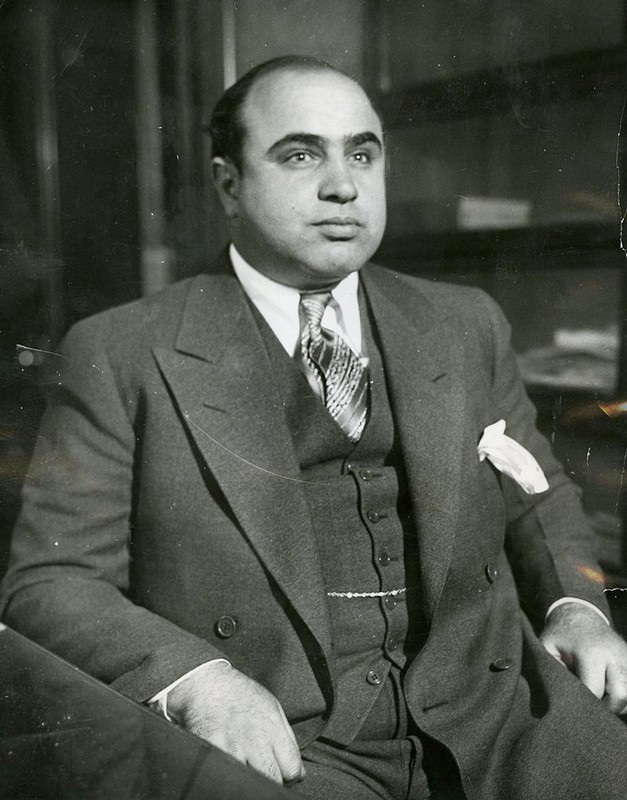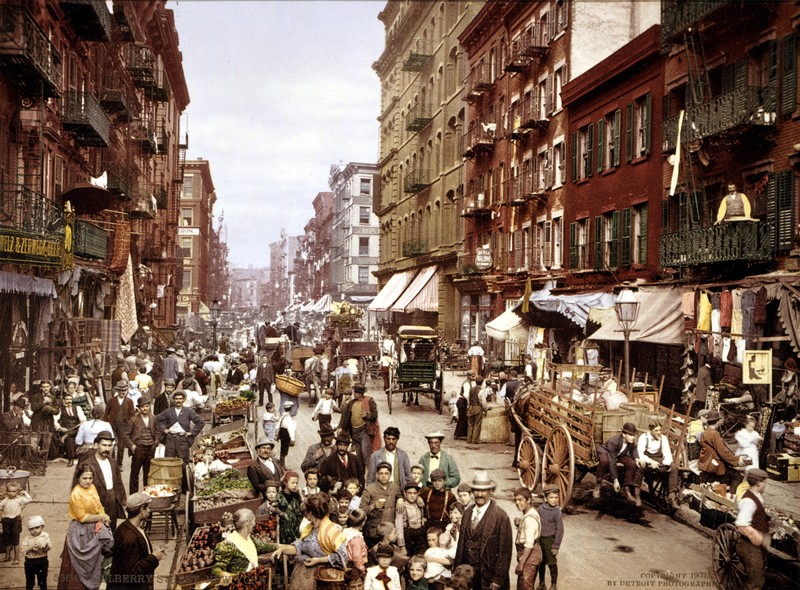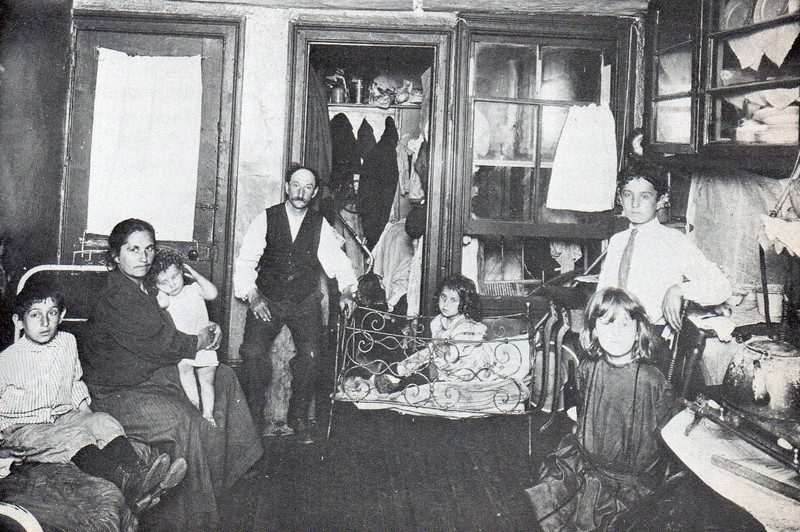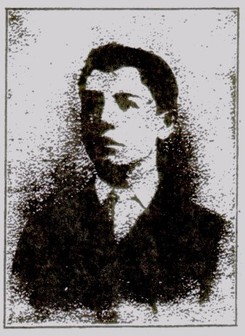Birthplace of Al Capone
Introduction
Text-to-speech Audio
Images
Al Capone in the 1930s, courtesy of the Chicago Bureau (Federal Bureau of Investigation)

Mulberry Street, along which New York City's Little Italy is centered. Lower East Side, circa 1900. Credit: Library of Congress

An Italian family in an East Side apartment

John Torrio in 1903

Young Al Capone with his trademark scars

Backstory and Context
Text-to-speech Audio
Brief Overview of the Hardships Faced by First-Generation Italian Immigrants in Brooklyn
After the unification of Italy in 1861, economic conditions in the southern regions of the country, including Naples, Calabria, and Sicily, worsened, and poverty deepened. Due in part to the labor shortage in the United States during the Reconstruction era, many Italians found better opportunities by moving to America for work. By the 1880s, immigration to the U.S. heightened, where some estimates show that between 1880 and 1920 more than four million Italian immigrants came to the United States. Like many immigrants at that time, most notably the Irish and the Jews, immigrant families settled in New York and the surrounding boroughs.
In Brooklyn, many of the Italian immigrants faced greater difficulties assimilating, as compared with other immigrant groups. Especially for the Southern Italians and the Sicilians, most of who were peasants and craftsmen in their home regions, it was commonplace for these Italian immigrants to be wary of outsiders while placing immense loyalty on family and community. This loyalty, however, went beyond allegiance to the adopted United States, and therefore, some of the Italian immigrants who would break US laws, who were gangsters and racketeers, weren’t looked down upon by their community. This was true as long as they remained loyal to their community and, above all, dignified family men.
Many first-generation Italians couldn’t read, write, or speak the language either, so many made a living for their families by selling rags from carts, running fruit and vegetable shops, stone masonry, bricklaying, ditch digging, and occupying many of the other low-paying jobs in Brooklyn and New York.
More dire to the arrival of such a great multitude of Italian immigrants was the prejudice many of them faced, from illiteracy (illiteracy among Italians was higher than other first-generation immigrants, as work caused many children to never reach High School; however, illiteracy was massively improved by the second generation) to a plaguing myth that Southern Italians and Sicilians held inherent criminal instincts, though statistics show that very few Italians ever actually committed criminal activities. Those that did, nevertheless, received widespread attention from those that perpetrated these prejudices. The effect of these prejudices, however, caused Italian-Americans to draw closer together, forming enclaves not only impenetrable by outsiders but also among traditional and regional lines. As such, Sicilians were wary of Neapolitans, Romans were suspicious of Calabrians, and so forth.
Before looking at the childhood and rise of Alphonse (Al) Capone, it is essential to form connections between this community and the path that led Capone to become the criminal kingpin of Chicago.
The Childhood of Alphonse (Al) Capone
Alphonse Capone was born on January 17th, 1899, in Brooklyn to his father Gabriele, a barber, and his mother Teresina Raiola, a seamstress. Gabriele and Teresina had immigrated to the United States in 1893 from Castellammare di Stabia, located about 20 miles south of Naples. The Capone family (an Americanization of their Italian name, “Caponi”) first lived at 95 Navy Street in Brooklyn, which in the 1890s was in the heart of the largest Italian neighborhood. Rent was a mere $4 a month, and none of the flats in the tenement-style housing had running hot water, bathrooms, or heat. By all accounts, the Capone family, including nine children, were quite typical among other families in the Italian-American community.
Al Capone, however, was different in that he was quite disconnected from his parent’s Neapolitan roots, often claiming, “I’m no Italian…I’m from Brooklyn.” Along with other children dressed in rags, Capone spent the first 10 years of his life playing stickball, dodging traffic, and attending music shows during the warmer months. These shows popped up at the corner of Sands and Navy streets, and although it was the roughest area in the city, it was where Capone would develop his love for Italian opera. Yet, the rough area, known for murder and mayhem as well as drunken sailors bent of gambling and visiting brothel houses, was nonetheless a prominent introduction into the underbelly of life in the first decades of the 20th century.
Regarded for his buckshot rage and hard fist, Al Capone soon gained a prominent friendship with later-infamous-gangster John Torrio. At the time they became friends, Torrio already held a prominent reputation as a member of the notorious Five Points Gang. Although Torrio lacked any hesitation to commit murder, he also provided wise advice on the business side of organized crime, and Torrio often spoke about how there was enough money in rackets to share without needing bloodshed.
By 1907, the Capone family moved to 38 Garfield Place in Brooklyn. Al maintained his ties with Torrio, and he performed well in school up until the sixth grade, when truancy became the norm. During this schooling, Capone also became good friends with Salvatore Luciano (Charles “Lucky” Luciano).
At the age of 14, Capone attacked a teacher and quit formal schooling, and during these years, Lucky Luciano and Capone joined the Five Points Gang, which Torrio introduced them to.
Capone’s Introduction to Criminal Activity
Fully understanding the culture of gangs in 19th and early 20th century New York is a detailed and complex topic on its own. In short, the Five Points Gang that Capone and Luciano joined was the successor of the Whyos, who emerged after the Civil War and immediately competed against the Dead Rabbits, the Bowery Boys, the Plug Uglies, and others. At the time of Capone's joining, the Gang no longer held the prestige it once had.
Also, in Brooklyn at the time, various streets were essentially off-limits to outsiders. For example, Flushing Avenue was dangerous to non-Sicilians (and the Sicilians were known for their efficacy with a knife); the neighborhoods near the Navy Yard were dominated by the Irish (who preferred using canvas sacks filled with stones and brick); and Williamsburg was controlled by the Jewish gangs, who were mostly peaceful except for the Havemeyer Streeters that essentially waged war on all non-Jewish gangs, particularly the Italians.
From racketeering gigs to bouncing and bartending at prominent Sicilian gangster Frank Yale’s establishments and hangouts, Capone was arrested three times during his time with the Five Points, including once for disorderly conduct and twice for suspected murder. Capone also acquired his trademark scars while bouncing at the infamous hangout, the Harvard Inn.
In 1918, Al Capone met and eventually married Mae Coughlin, an Irish woman. Despite antagonisms between the two groups, it wasn’t uncommon for Italian men and Irish women to marry (Torrio also married an Irish woman). The couple had a child, Sonny, in 1919, and Torrio was named Godfather.
Since 1909, Torrio had been spending some time in Chicago, and he found great prospect there. Back in Brooklyn, Capone wasn’t quite satisfied with his fortunes, and because he was already suspected of two murders and, due to a brawl, possibly a third if the man died in the hospital (he recovered), Capone and his family fled New York and moved to Chicago at Torrio's request.
Keep in mind that, by the time of the move, Al Capone was only 20 years old. Only six years later, Capone became the boss of an organization that supported illegal breweries and created bootlegging transportation networks reaching Canada.
